Recent Fire Damage Posts
5 Steps for Cleaning Smoke-Damaged Electronics
11/20/2023 (Permalink)
When disaster strikes, the aftermath can be overwhelming, especially when it comes to smoke damage. Electronics are particularly susceptible to harm, and if not handled properly, they may be permanently damaged. In this blog post, we will outline five crucial steps to effectively clean smoke-damaged electronics, helping you restore them to their optimal condition. Remember, safety should always be your top priority. If you're uncertain or uncomfortable with the process, it's best to consult a professional.
Step 1: Disconnect the Power
Before attempting any cleaning, make sure to disconnect the power source to the affected electronic devices. This crucial step will help prevent further damage or the risk of electrical shock. Unplug the devices from their power outlets, remove batteries if applicable, and ensure there are no remaining power sources connected to them.
Step 2: Assess the Damage
Thoroughly examine each electronic device to assess the extent of the smoke damage. Look for signs of residue, discoloration, or any visible damage on the exterior. Take note of any components that might require special attention during the cleaning process. If you're unsure about the damage or how to proceed, it's advisable to consult a professional technician or the manufacturer.
Step 3: Remove Loose Residue
Gently remove loose smoke residue from the surface of the electronics using a soft, dry cloth or a soft-bristle brush. Avoid using water or any cleaning agents at this stage, as they can potentially spread the residue or cause further damage. Be cautious not to apply excessive pressure, as it may push the residue further into the device.
Step 4: Cleaning the Interior
To clean the internal components of the electronics, it's best to use compressed air or a specialized electronics cleaning spray. These products can help remove smoke residue from sensitive areas without causing harm. Follow the instructions provided by the manufacturer of the cleaning product and use it sparingly. Ensure the devices are completely dry before proceeding to the next step.
Step 5: Professional Inspection and Testing
After completing the cleaning process, it's essential to have a professional inspect and test the electronics. They can perform a thorough evaluation of the internal components and identify any potential damage that may have been overlooked. Their expertise will ensure that the devices are safe to use and in optimal working condition.
Cleaning smoke-damaged electronics requires careful attention and the right techniques to prevent further harm. By following these five essential steps, you can increase the chances of restoring your devices and minimizing the impact of smoke damage. Remember, if you're uncertain about any aspect of the cleaning process or if the damage seems severe, it's always best to seek professional assistance. Safeguard your investment and ensure the longevity of your electronics by addressing smoke damage promptly and properly.
If you require further assistance or have any questions, don't hesitate to reach out to our team of experts at SERVPRO of Beverly Hills/Westwood. We are here to help you through the restoration process and ensure that your electronics are restored to their pre-damage state.
Plan Your Escape: A Step-by-Step Guide to Creating a Home Fire Escape Plan
4/6/2023 (Permalink)
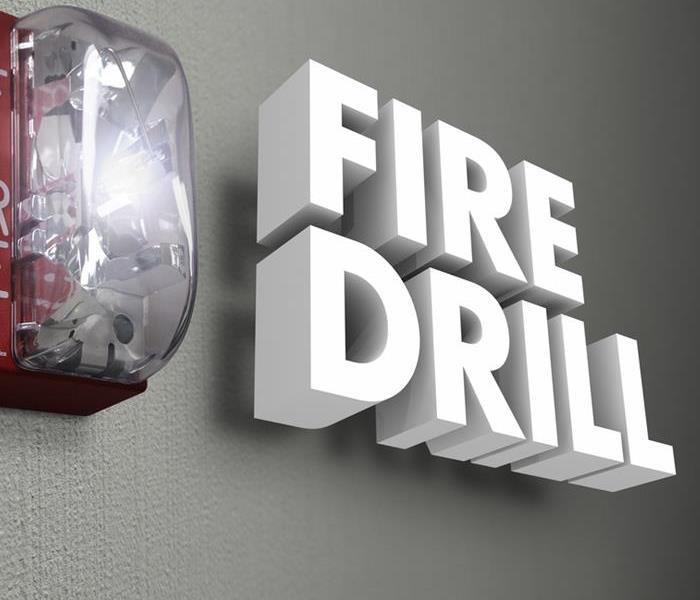 Having an escape plan is simple and important to have to keep your family safe incase of a fire.
Having an escape plan is simple and important to have to keep your family safe incase of a fire.
Having a home escape plan is a crucial aspect of fire safety that can save lives. According to the National Fire Protection Association (NFPA), home fires result in an average of seven deaths and 11 injuries per day in the United States. By creating a home escape plan and practicing it regularly, you can prepare yourself and your loved ones for the possibility of a fire emergency.
Here are some steps to follow when creating a home escape plan:
Draw a map of your home
- The first step in creating a home escape plan is to draw a map of your home. This should include all rooms, hallways, and exits. Make sure to include all doors and windows, as these will be your primary escape routes in case of a fire.
Identify two ways out of each room
- Once you have a map of your home, go through each room and identify two ways out. This could be a door and a window, or two different doors. Make sure that each exit is easily accessible and that there are no obstacles blocking the way.
Choose a meeting place outside
- Choose a meeting place outside your home where everyone can gather after escaping. This could be a neighbor's house, a mailbox, or a tree. Make sure that everyone in your household knows where the meeting place is and that it's a safe distance from the house.
Install smoke alarms
- Smoke alarms are essential for early detection of a fire. Install smoke alarms on every level of your home, including the basement and attic, and inside each bedroom. Test your smoke alarms monthly and replace the batteries at least once a year.
Practice your escape plan
- Once you have a home escape plan in place, it's important to practice it regularly. This will help you and your family members remember the plan in case of a real emergency. Set a time each year to practice your escape plan and make sure that everyone in your household participates.
Here are some additional tips to keep in mind when creating a home escape plan:
- If a room has a window with bars or grills, make sure they can be easily opened from the inside in case of an emergency.
- Teach children how to escape on their own in case you are not able to help them.
- If you have pets, make sure to include them in your home escape plan and practice with them as well.
- If you live in an apartment building, know the fire safety procedures for your building and use the stairs, not the elevator, in case of a fire.
- If you have a disability or are unable to escape on your own, make sure to have a plan in place with someone who can help you escape.
Creating a home escape plan is a simple yet important step in fire safety. By following these steps and practicing your plan regularly, you can help ensure that you and your loved ones are prepared in case of a fire emergency. Remember, in a fire every second counts, so be sure to act quickly and safely if a fire does occur.
Safety tips to prepare your family incase of a Fire
2/20/2023 (Permalink)
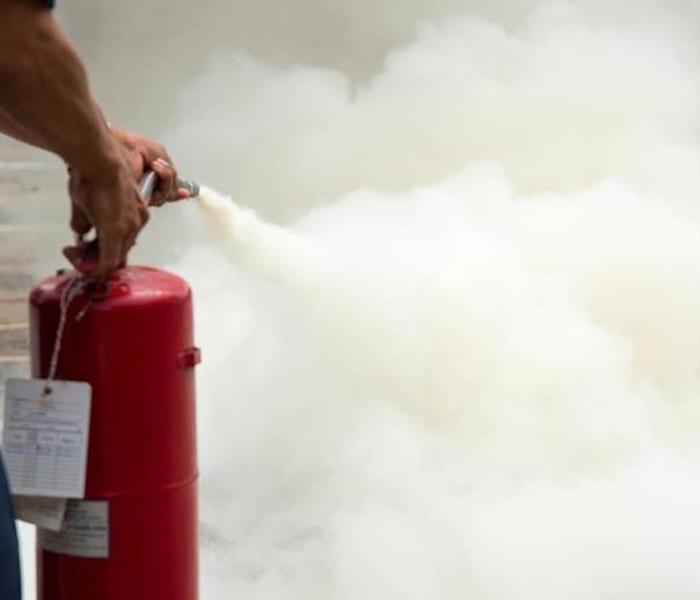 Have a plan in place incase of an emergency for your family.
Have a plan in place incase of an emergency for your family.
A grease fire that starts in the kitchen or an electrical fire caused by faulty wiring, fires can happen in the blink of an eye. You may be prepared for them and know what to do when they occur, but to avoid serious injuries make sure to prepare your family with a plan.
Tips to prevent injuries to your family
In the event of a fire, here are some tips to help prevent injury, damage and stress. Stop, Drop, and Roll. If a fire breaks out in your home, remember these 3 words to get you out of your home safely. When you go to bed at night, close the bedroom doors to help protect fire and smoke spreading throughout the home. The door will hold off any smoke or fire from getting in the door that could possibly bye you some time for exit. For a small fire, if you feel comfortable, use a fire extinguisher. If you feel like you can't control it call 911 immediately and take it with you when escaping.
Stay Calm
Stay calm. If someone panics or runs around trying to grab things before leaving their home, this could cause them to get hurt or get burned by hot surfaces in your home. Get out of the house immediately and call 911 from outside if possible. Do not go back inside until the fire department gives you permission. Stay low to the ground, keeping your hands on the floor, cover your mouth with a towel or shirt so that no breathable air enters your lungs instead of breathing through your nose or mouth.
It is important that these things be discussed frequently to ensure your family has a meeting place outside of the home to account for everyone for safety. It is very important that everyone stays out of the home to prevent injury by falling debris or smoke inhalation even after the flames have been extinguished. Don't go back inside until firefighters tell you it's safe again.
Remember, it’s important to have a plan in place and know what to do in case of an emergency. You should also make sure everyone in your family knows the plan so they can help out if necessary. By following these tips, you can help keep everyone safe during any type of fire situation.
How Ozone Generators Remediate Smoke Smell
12/1/2022 (Permalink)
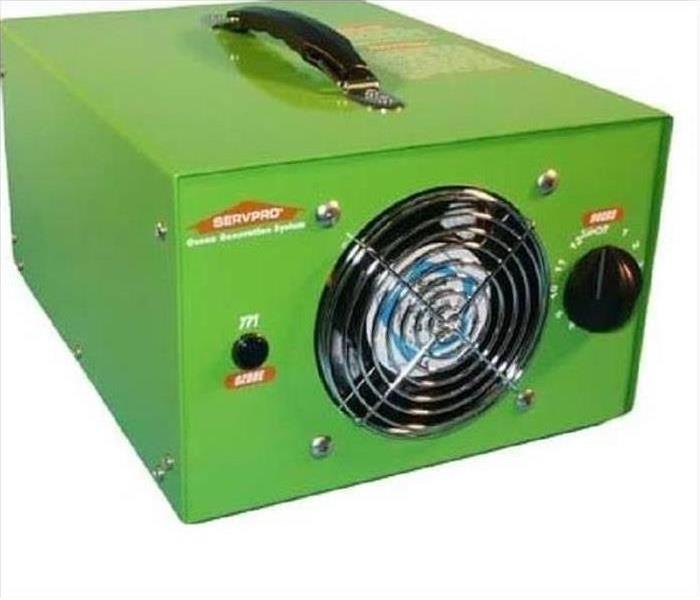 After a fire, using ozone generators is a secure and efficient technique to eliminate smoke odor.
After a fire, using ozone generators is a secure and efficient technique to eliminate smoke odor.
How Ozone Generators Eliminate the Smell of Smoke
Ozone generators are used to remove smoke smell from a property. In this article, we'll discuss how ozone is made, the science behind it, and how it's used to remove smoke smells.
What is an ozone generator?
An ozone generator is a device that emits ozone in the air. It's typically used to clean up rooms, buildings and other areas that have a bad smell. Ozone generators can be used indoors or outdoors, even after the smoke smell from a fire has already dissipated.
For example, if there was an electrical fire in your home and you had to get out quickly, there will still be lingering smoke smells left over after the flames have been extinguished. These odors can be hard to get rid of on their own; but with an ozone generator it's easy! With one quick pass of your unit through each area affected by the smoke smell — whether it be simply walking through all affected rooms or using some sort of fan system — the room will feel fresh again!
Ozone generators are also good options if there was mold in your home at any point before this incident happened (or if there is now). The high levels of humidity caused by flooding leaves behind spores which need cleaning up immediately because otherwise they'll spread throughout nearby areas quickly creating more problems down the line.
How does it work?
Ozone generators are powerful oxidizers that break down organic compounds in the air. Ozone, the ozone generator's product, is a gas that can be used in a variety of ways. It's produced by an ozone generator and acts as an odor neutralizer by attacking smoke odors at the source. Ozone is naturally occurring in the earth's atmosphere and created by lightning when it strikes oxygen molecules in the air.
Is ozone bad for my stuff?
Ozone is a natural element that comes from the air, so it's not harmful to people or animals. Ozone is safe to use in homes, offices, and other settings where ozone generators are used to remediate smoke smell.
Ozone does not damage furniture, carpet, clothing, or other household items. If you're concerned about using an ozone generator around your belongings, test a small area before using it all over if you have any doubt at all about whether it might be harmful.
Important factors in odor removal
Ozone is a powerful oxidizer. In the presence of smoke, ozone will react with the organic molecules and break them apart. When this happens, the odor will be removed from your home. Ozone is not effective at removing other odors besides smoke or mold and mildew. It can't remove pet odors because they're caused by bacteria that grow on the surfaces where pets spend time (their beds, for example).
If you want to neutralize a room filled with smoke odor, consider using an ozone generator in combination with another method like dehumidifiers or air purifiers (or both!).
What is the key to ozone's effectiveness?
The key to ozone's effectiveness is its ability to kill bacteria, viruses, and mold. In fact, ozone is an extremely powerful oxidizer. It can be used to purify water by oxidizing organic contaminants like pesticides, herbicides, and other toxins in the water.
Ozone generators are also used for deodorization in a variety of industries such as food processing plants where they eliminate odors from smelly foods such as fish or chicken carcasses that may have spoiled during processing into products such as tuna fish cans or chicken nuggets.
Ozone generators also help remediate smoke smell from fire damage by using the same principle: killing bacteria with ozone gas so that no further contamination occurs after your home has been cleared out of fumes or toxic particles from a fire rescue effort
Why SERVPRO professionals recommend using ozone to remediate a home after a fire.
Ozone generators are a safe and effective way to remove smoke smell after a fire. They're also safe for use around pets and children. In addition, ozone generators are portable, so you can use them in any room of the home.
They're easy to use: Simply plug in your ozone generator, turn it on and set it on the floor near where you'd like to deodorize. Within minutes, that smoke smell will be gone!
There are many ways to remove smoke smell in your home. You can try cleaning products, air fresheners, or even candles (though those aren’t recommended). But the best way is to call SERVPRO of Beverly Hills/ Westwood who uses ozone generators. That way, you know that the job will be done right and that you won’t have to worry about any toxic chemicals being released into your indoor environment.
What To Do When You Smell Natural Gas
8/30/2022 (Permalink)
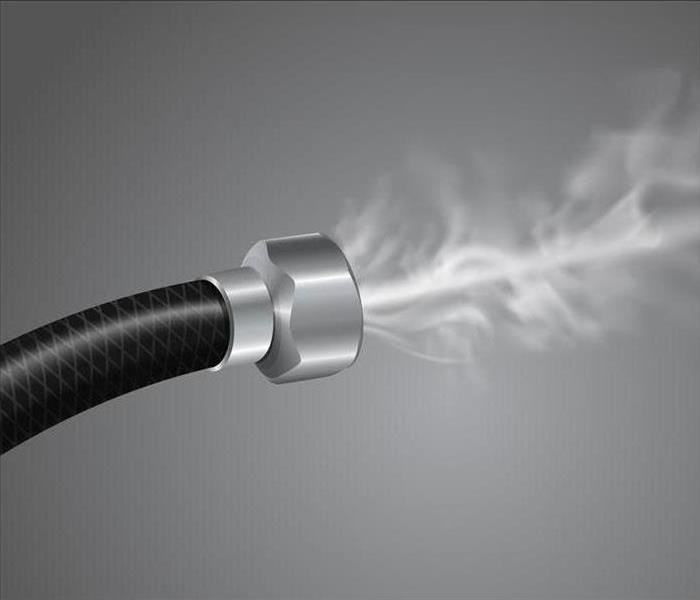 A potential gas fire is an emergency!
A potential gas fire is an emergency!
Steps To Protect Yourself And Your Family
If your home in Beverly Hills, CA uses gas for heating or cooking, it's important to know what to do in the event of a gas leak. On its own, natural gas doesn't have a smell, so providers put additives in that give it a scent in order to protect consumers. If you smell gas inside or outside of your home or hear a hissing sound, there are steps to take to ensure that you protect yourself and your family.
1. Don't Touch the Lights
When you first smell gas and you're not sure what's happening, the first step is to NOT turn on the lights. If there is a leak, turning a light switch on or off can trigger a reaction that causes a gas fire. Similarly, don't use matches, start or stop appliances, or use the phone.
2. Check the Stove
Check the stove to make sure that all the burners are off. One common reason that you smell gas but a gas explosion isn't imminent is that a burner was accidentally bumped on.
3. Open the Windows
If you can verify that the natural gas smell was caused by an improperly closed burner, it's safe to open the windows and doors to air out the house. However, if you've checked the stove and no burners are on, it's important to leave the windows closed to prevent oxygen from getting to a flame.
4. Leave the House
When the stove is ruled out as the cause of the smell, it's time to leave the house — and quickly. Worry only about getting the people in your home out; don't try to take extra items with you. A potential gas fire is an emergency!
5. Call for Help
Once you're safely away from the house (at least across the street), call 911 for help. In the event of an explosion that causes damage, an emergency restoration team will work with you to get you back in your home quickly.
A gas fire is a common way that homes sustain damage. If you think you smell gas, protect your family by leaving the house and calling for help.
Is a Smart Smoke Alarm Right for You?
6/6/2022 (Permalink)
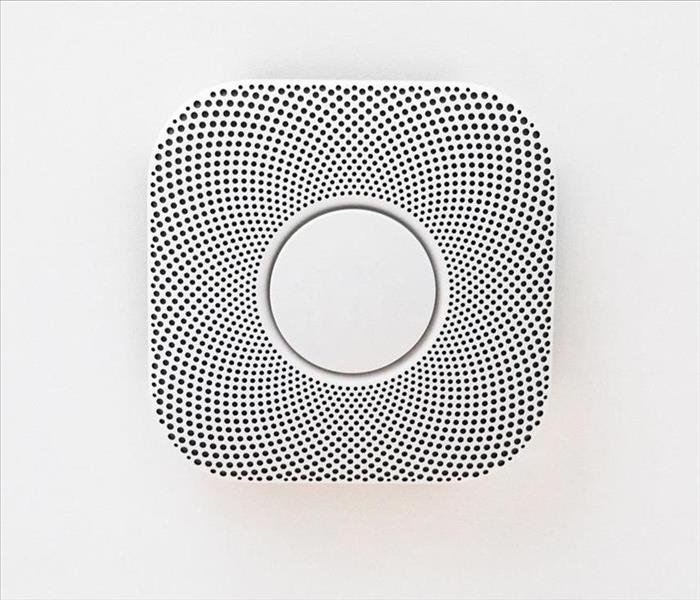 Investing in smart detectors to improve your home's security can be a wise move.
Investing in smart detectors to improve your home's security can be a wise move.
Are You a Good Candidate for a Smart Smoke Alarm?
Changing your Beverly Hills, CA, smoke alarm to a smart device can seem like a big jump. After all, these detectors have performed well without any significant changes to their design. However, smart detectors add peace of mind and fire safety features you don't have with a traditional alarm.
Device Types
A smoke detector is essential. It keeps you safe and helps you avoid the need for fire mitigation services.
Three main kinds of smart devices enhance the ability to detect smoke in your home:
- Smart detector
- Listener
- Smart batteries
A smart smoke detector is an entire device that replaces your previous one. It connects to your phone, and you receive notifications through an app. You can silence false alarms and learn when it's time to change the batteries. Some models include carbon monoxide detection. Smart detectors usually run $100 or more per device.
Listeners are devices you plug into your wall. They listen for the specific frequency of a smoke alarm and send you a notification if one activates. If your home only requires one detector, a listener probably won't save you money since it costs around $100. However, a device can listen to one or more floors of your home, so you can potentially save money with a listener instead of purchasing several new alarms.
Smart batteries operate like 9-volt batteries. They connect to your phone and send notifications when the alarm goes off. They also notify you when the battery life reaches its end.
Choosing a Smart Smoke Alarm
The device you choose depends on your home's size, how old your current detectors are, and how much you're willing to spend. If you have one alarm nearly 10 years old, it may be worth it to replace it with a smart device. A listener or smart battery may be more economical if you have several newer alarms.
Enhancing the safety of your home with smart detectors can be a good decision. It helps first to consider the cost and return on your investment.
The Benefits of Regular Furnace Maintenance
5/25/2022 (Permalink)
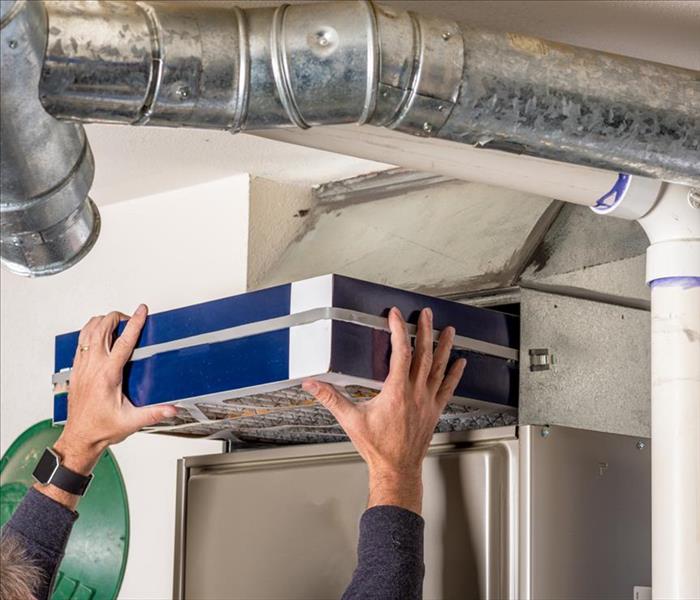 Change the furnace filters and make sure there are no obstructions around the unit.
Change the furnace filters and make sure there are no obstructions around the unit.
Furnace Maintenance
During times of cold weather, your furnace must bring you heat when you need it the most. To increase the likelihood of this happening, it makes sense to have a regular maintenance plan for this important item in your home in Westwood Village, CA. A few of these items you can do yourself, such as changing the furnace filters and making sure there are no obstructions around the unit. It is also a good idea to keep combustible items away from the heat source, so you won't need any fire cleaning services. For professional maintenance, it is best to call in a licensed HVAC contractor.
The Value of an Efficient Furnace
Dirt is one of the biggest enemies of your heating system. It can cause your unit to run less efficiently and it can cause wear and tear on components and hardware. A clean and well-oiled furnace provides many benefits to your home:
- A quiet and efficient operation
- A reliable heating unit
- An absence of emergency repairs
- A safe system
A well-maintained furnace is just one way to increase fire safety in your home. If you do need fire cleaning services, it is also important to hire a trusted fire mitigation franchise. Trained technicians will arrive at your home quickly and help you minimize damage and reduce costs.
The Importance of Smoke Cleaning
Even a small fire has the potential to cause soot and smoke damage. Fire restoration experts use advanced equipment and cleaning techniques to remove the most difficult stains and the most pervasive smells from a home fire. To deodorize a home, an odor control technician uses tools such as ozone machines, thermal foggers and air filtration devices. They understand the science behind smoke odors and can usually remove all hints of unpleasant smells. This is just one aspect of professional fire cleaning after a home fire, whether it is caused by your heating system or some other source.
How To Clean Up After a Commercial Fire
3/19/2022 (Permalink)
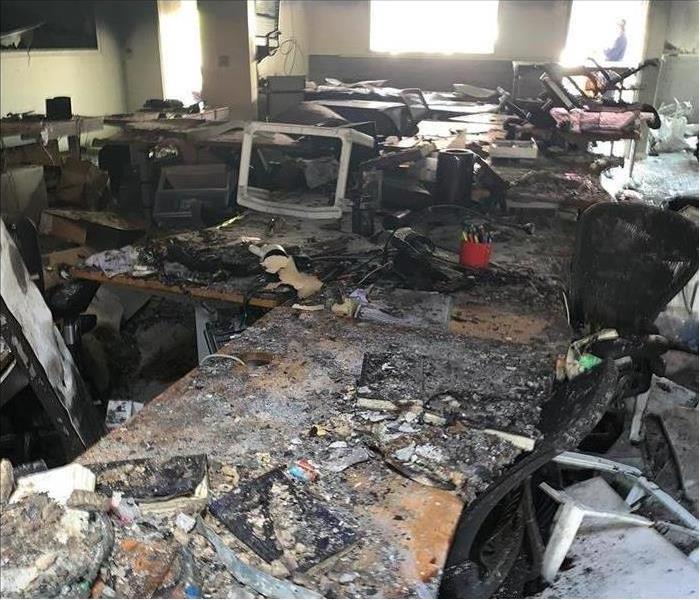 Commercial fire damage in Beverly Hills, CA.
Commercial fire damage in Beverly Hills, CA.
You may be skilled and efficient at running your business in Beverly Hills, CA, growing your customer base and dealing with personnel, however do you know what your business needs after a fire? Fires can be an unexpected disaster that can feel difficult to overcome. Knowing what steps need to be taken can make the fire and smoke damage cleanup feel more manageable.
What Things Need Cleanup After a Fire
Following a fire, there are several things that need doing right away. Specific processes need to be used for specific damage in order to salvage content. Following is a partial guide to cleaning:
- Dry cleaning for clothing and fabric items
- Ozone for smoke cleaning
- Vacuuming for loose soot
- Ultrasonic for non-porous surfaces
- Inspection of the structural elements
Know the Difference Between Soot and Smoke
Soot can be a tricky substance to clean as it is greasy and sticky. It is composed of incompletely burned oily or greasy materials and can contain toxic chemicals, so it must be cleaned carefully. Soot also carries a foul stench that may need extra cleaning. It cannot be dissipated unless the actual soot is removed.
Smoke odor can also be a plaguing problem. Smoke damage can cause staining and may even cause certain materials to become brittle. It can leave a clinging residue on every surface it touches and carries odor as well. The smoke odor can be removed by using an ozone machine.
Structural materials that are otherwise salvageable may still be affected by soot damage and the odors it carries. Cleaning the soot from studs, sheetrock, ceilings, countertops and other surfaces is critical to the elimination of the smell. Once cleanup is finished the structural restoration can begin.
In Beverly Hills, CA, you can get the help you need from qualified fire restoration professionals that are trained in cleaning smoke damage and the smells that go with it. You can have hope that your commercial building will be sound and clean smelling again soon.
How To Choose and Use a Fire Extinguisher for Your Home
2/25/2022 (Permalink)
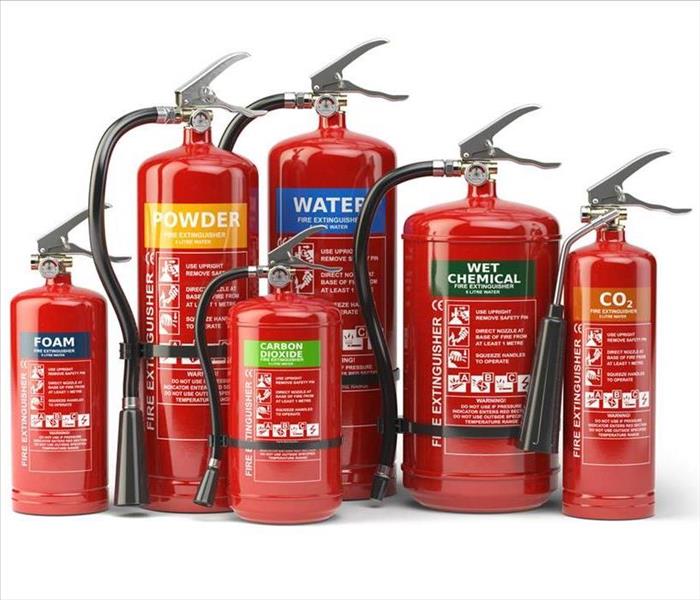 Identify the appropriate type of extinguisher.
Identify the appropriate type of extinguisher.
You hope you never have to face a fire in your home, but taking appropriate precautions is an important way to prepare for emergencies. One of the first things you should do, in addition to installing appropriate fire and smoke alarms, is to put a fire extinguisher in the kitchen.
Types and Classes of Extinguishers
The first step is to identify the appropriate type of extinguisher. There are several options available. These include:
- Water
- Water Mist
- AFFF Foam
- Carbon Dioxide
- ABC Powder
- Wet Chemical
It's important to understand which of these is best for your home. Look at the class designations to make this decision, for example water and foam fire extinguishers are only appropriate for class A fires.
• Class A: solid combustible materials, such as paper, coal, and wood
• Class B: flammable liquids, such as paints, alcohol, and paraffin
• Class C: combustion gases, such as propane, methane, and natural gas
• Class D: flammable metals, such as aluminum, sodium, and potassium
• Class K: combustible cooking materials, such as fats and grease
• Electrical: electrical appliances, such as stereos and fuse boxes
Why the Correct Choice Matters
Using the correct extinguisher is vital. For example, if you were to use a water mist extinguisher on a Class F fire, the water may send drops of burning oil or grease around the room, causing fire damage and injuries to your family members. The extinguishers recommended for homes are Class ABC with higher classification numbers, such as a 3-A:40-B:C unit.
How To Use an Extinguisher
Once you've chosen your extinguisher, follow the PASS sequence to put out flames before fire damage becomes too severe.
• PULL the pin.
• Aim at the base of the fire.
• SQUEEZE the lever or button about the handle.
• SWEEP from side to side.
If you already have extinguishers in your home, check the date. Even if you haven't used the devices, they may lose pressure or effectiveness if they are too old.
Keep Your Home and Family Safe
Fire extinguishers are a vital element of home and family safety. If you're not sure where to keep the safety devices or how many you need for your home, contact fire remediation professionals in Century City, CA.





 24/7 Emergency Service
24/7 Emergency Service







